Anon., 1982. A manual on selection of aquaculture project sites. Institutional Support for Majuikan Aquaculture Development Project. FAO/UNDP/MAL/79/018 ISMAD/82/REPSTUD/1: 64 p.
Anon., 1982. Aquaculture development masterplan for 1981–1990. Institutional Support for LKIM Aquaculture Development Project, FAO/UNDP/MAL/79/018. Reports and studies ISLAND/82/REP-STUD/3:133 p.
Anon., 1986. Water quality criteria and standards for Malaysia. Vol.2. General guidelines and review of water resources. Consultant Group on Water Quality, Institute of Advanced Studies, University of Malaysia, pp.A-1 to B85
Anon., 1986, 1987. Monthly abstract of meteorological observations, January 1986. (Note: title the same for all numbers, except for name of month; some published in 1986 and others in 1987, but not consistent). Malaysian Meteorological Service, Kuala Lumpur, 40 p.
Anon., 1987. Annual summary of meteorological observations 1985. Malaysian Meteorological Service, Kuala Lumpur
Anon., 1987. Annual fisheries statistics 1986. Department of Fisheries, Ministry of Agriculture, Kuala Lumpur
Anon., 1987a. Lapuran kajian potensi ternakan ikan/undang airpayau dalam kolam bagi tapak di Kg. Ladang, Sg. Pendas, Johor. Pusat penyelidikan Ternaken Airpayau, Gelang Patah, Johor
Anon., 1987b. Lapuran kajian potensi ternakan ikan/undang airpayau dalam kolam bagi tapak di Kg. Ladang, Sg. Peradin, Johor. Pusat Penyelidikan Ternaken Airpayau, Gelang Patah, Johor
Anon., 1987c. Lapuran kajian potensi ternakan ikan/undang airpayau dalam kolam bagi tapak di Sg. Kilang, Sg. Johor, Johor. Pusat Penyelidikan Ternaken Airpayau, Gelang Patah, Johor
Anon., (no date). Malaysia. Environmental quality report 1981–84. Department of Environment, Ministry of Science, Technology and the Environment, 160 p.
Chan, W.L. et al., 1978. Cage culture of marine fish in east coast Peninsular Malaysia. SCS/78/WP/69:66 p.
Chen, H.C., 1985. Water quality criteria for farming the grass shrimp, Penaeus monodon, p.165. In Taki, Y., J.H. Primavera and J.A. Llobrera (eds.). Proceedings of the First International Conference on the Culture of Penaeid Shrimps
Chua, E.T., 1978. Site selection, structural design, construction, management and production of floating cage culture system in Malaysia. International Workshop on Pen and Cage Culture of Fish, IDRC and Aquaculture Dept., SEAFDEC:65–80
Chua, E.T., T.B. Hooi and L.T. Wang, 1985. A case study on commercial cage culture of fin fish in Penang. TCP/MAL/4403 Report No. 4:43 p.
Coche, A. and F. Demoulin (eds), 1986. Report of the Workshop on aquaculture planning in the Southern African Development Coordination Conference (SADCC) countries. CIFA Tech.Pap., (15):2 p.
Conant, F. et al., 1983. Resource inventory and baseline study methods for developing countries. American Assoc. Adv. Sci., 83–3, Washington, D.C., 539 p.
Cook, H.L. and H. Rabanal (eds.), 1978. Manual on pond culture of penaeid shrimp. ASEAN National Coordinating Agency, Manila 132 p.
Cook, H.L., U. Pongsuwana and S. Wechasitt, 1984. Recommendations for construction and management of brackishwater aquaculture ponds in areas with acid sulfate soils. In: FAO, 1984. Malaysia coastal aquaculture development. FI:DP/MAL/77/008, Field Document 2:243–60
de la Cruz, C.R., 1983. Fishpond engineering: a technical manual for small - and medium-scale coastal fish farms. South China Sea Fisheries Development and Coordinating Programme, Manila, SCS Manual No. 5, 180 p.
Fakulti Perikanan dan Sains Samudera, 1985. Feasibility studies of potential aquacultural sites in the penggerang region of Kejora. Universiti Pertanian Malaysia, Serdang, Selangor, 49 p.
FAO, 1983. Report on the FAO/LKIM Workshop on strategic fisheries development and manpower planning in Malaysia. FAO Fish.Rep., (286):60 p.
FAO, 1984. Institutional support for LKIM aquaculture development programme. Malaysia Project findings and recommendations. FI:DP/MAL/79/018
FAO, 1984. Aquaculture development of the Fisheries Development Authority. Project findings and recommendations. FI:DP/MAL/79/018 Terminal Report. UN/FAO, Rome, 62 p.
FAO, 1984. Malaysia coastal aquaculture development. FI:DP/MAL/77/008 Field Document No. 2:278 p.
FAO, 1987. Programme of work and budget for 1988–89. United Nations Food and Agriculture Organization, Rome, 381 p.
France-Aquaculture, 1985. Aquaculture development project Peninsular Malaysia. Final Report. T.A. No. 625 MAL
Hechanova, R.G. and B. Tiensongrusmee, 1980. Report of assistance on selection of site, design, construction and management of the Ban Merbok, Kedah, Malaysia brackishwater aquaculture demonstration project. SCSP/80/WP/88
Ikenoue, H., 1985. Present condition and future prospects of sea bass and grouper cage culture in Malaysia. GCP/MAL/009/CAN
Jamandre, T.J. and H.R. Rabanal, 1975. Engineering aspects of brackishwater aquaculture in the South China Sea Region. South China Sea Fisheries Development and Coordinating Programme, Manila, SCS/75/WP/16
Kapetsky, J.M., L. McGregor and H. Nanne E., 1987. A geographical information system and satellite remote sensing to plan for aquaculture development: a FAO-UNDP/GRID cooperative study in Costa Rica. FAO Fish.Tech.Pap., (287):51 p.
Kapetsky, J.M., J.M. Hill and L. Dorsey Worthy, 1988. A geographical information system for catfish farming development. Aquaculture, 68:311-20
Karim, M. and S.V.C. Bose, 1985. Pen culture of shrimp in the backwaters of Killai, Tamil Nadu. Bay of Bengal Programme BOBP/WP/35:42 p.
Kungvankij, P., 1987 (MS). The possibilities and investment potential for seafarming in Indonesia. Vol.1. Cage culture of high valued marine finfish Seafarming Development Project INS/81/008
Liong, P.C., 1984. Water quality standards for aquaculture in Malaysia. Jabatan Perikanan, Kementerian Pertanian Malaysia. Risalah Perikanan Bil. 20:10 p.
Meaden, G., 1987. Where trout farms should be in Britain. Fish Farmer, March/April:33-5
Mok, T.K., 1982. Selection of suitable site for cage culture. SCS/PCC/WP10:99–102. In Guerrero III, R.D. and V. Soesanto. Report of the Training on Small-Scale Pen and Cage Culture for Finfish. SCS/GEN/82/34
Muir, J.F. and J.M. Kapetsky, in press. Site selection and project cost: The case of brackishwater pond systems. In Proceedings of the Symposium on Aquaculture Engineering Technologies for the Future. Institute of Chemical Engineers
Nash, C.E., 1986. Observations on international technical assistance to aquaculture. UNDP/FAO Aquaculture Development and Coordination Programme, Rome. ADCP/REP/1986/23, 21 p.
Nash, C.E., 1987. Future economic outlook for aquaculture and related assistance needs. UNDP/FAO Aquaculture Development and Coordination Programme, Rome. ADCP/REP/1987/25, 14 p.
Paramananthan, S., 1978. Register of soils Peninsular Malaysia. Division of Agriculture, Soils and Analytical Services. Bulletin No. 7 (not paged sequentially)
Rotmann, K.W.G., 1987. The collection, utilization and potential farming of red seaweeds in Namibia. Hydrobiologia, 151/152:301-5
Satia, M., 1986. Planning for aquaculture in Africa. In Gaudet, J.L. and D. Parker (eds), Summary of proceedings and selected papers. Symposium on the planning and implementation of fisheries management and development programmes in Africa. Lusaka, Zambia, 7–11 October 1985. FAO Fish. Rep., (360):155 p.
Sirkul, B., 1982. Stocking and rearing of seabass in grow-out ponds and cages. SCS/82/SBTC/Lec. 17. Report of Training Course on Seabass Spawning and Larval Rearing SCS/GEN/82/39:38–41
Smith, I.R., 1986. The economics of small-scale seaweed production in the South China Sea region. FAO Fish. Circ., (806):26 p.
Tiensongrusmee, B., S. Pontjoprawiro and I. Soedjarwo, 1986. Site selection for the culture of marine finfish in floating netcages. Seafarming Development Project INS/81/008/Manual/1:24 p.
UNDP/NMDC/FAO, 1987. Thematic evaluation of aquaculture. United Nations Food and Agriculture Organization, Rome, 85 p.
US Army Coastal Engineering Research Center, 1977. Shore protection manual, Vol.1. Washington, D.C., US Government Printing Office, 3rd ed.
Wong, I.F.T., 1980. The present land use of Peninsular Malaysia. Ministry of Agriculture Peninsular Malaysia, Publications Unit, Kuala Lumpur. Vol.1: Texts, Vol.2: Maps, 642 p.
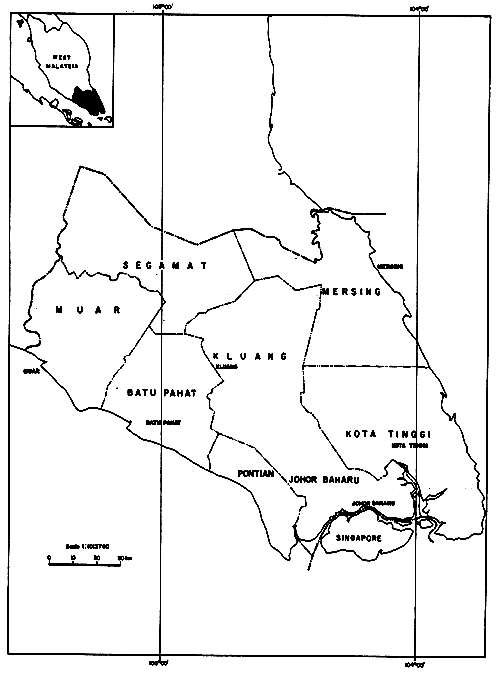
Fig. 1 Johor administrative boundaries and population centres
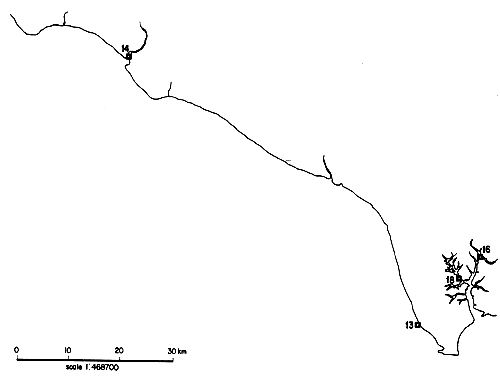
Fig. 2 Locations of water quality measurements. Site names corresponding to the numbers are in Table 2 (a) west coast
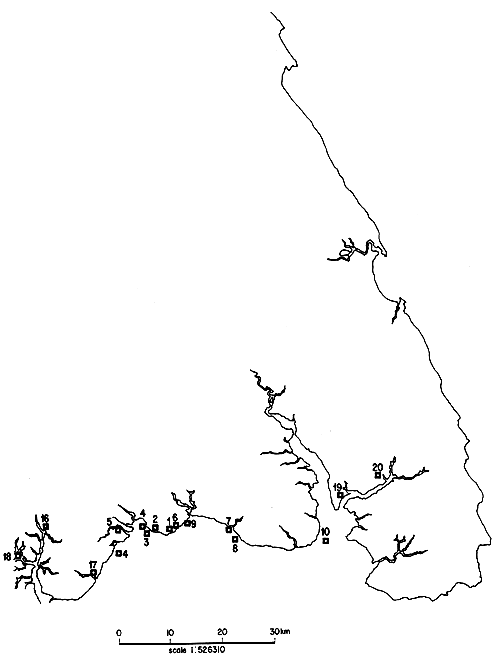
Fig. 2 Locations of water quality measurements. Site names corresponding to the numbers are in Table 2 (b) south and southeast coast
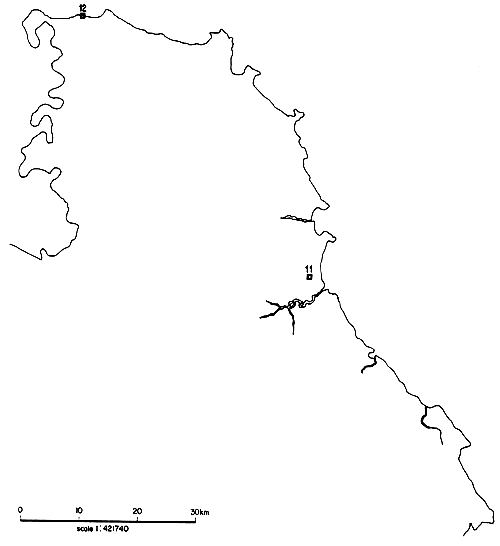
Fig. 2 Locations of water quality measurements. Site names corresponding to the numbers are in Table 2 (c) northeast coast
ERDAS MODELS AND FUNCTIONS
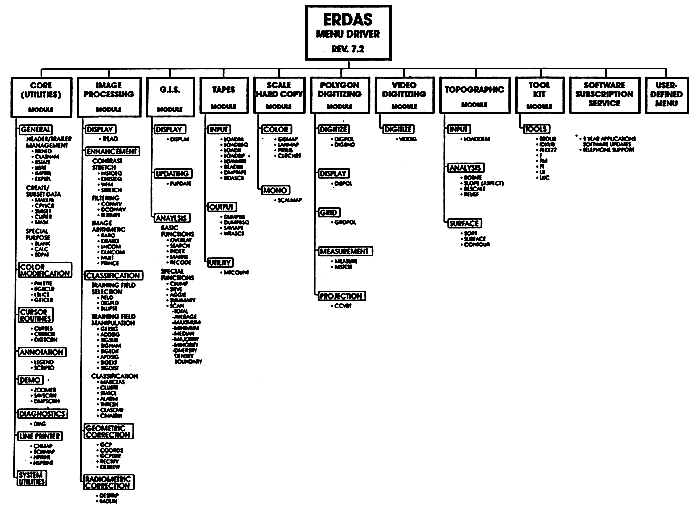
Fig. 3 Earth Resources Data Analysis System, Inc. (ERDAS) overview of modules

Fig. 4 Locations of soils rating fair or better for both pH and texture. Kranji, a potentially acid soil, is identified individually (a) west coast

Fig. 4 Locations of soils rating fair or better for both pH and texture. Kranji, a potentially acid soil, is identified individually (b) south and southeast coast

Fig. 4 Locations of soils rating fair or better for both pH and texture. Kranji, a potentially acid soil, is identified individually (c) northeast coast

Fig. 5 Soil suitability ratings with respect to acidity in relation to total annual rainfall. Kranji, a potentially acid soil, is identified individually (a) west coast
ISOHETS vs SOIL CLASSIFICATION (pH)
(SOUTH JOHOR)
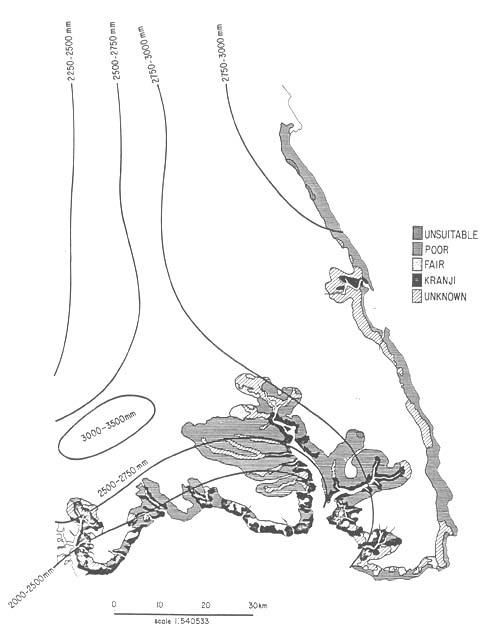
Fig. 5 Soil suitability ratings with respect to acidity in relation to total annual rainfall. Kranji, a potentially acid soil, is identified individually (b) south and southeast coast
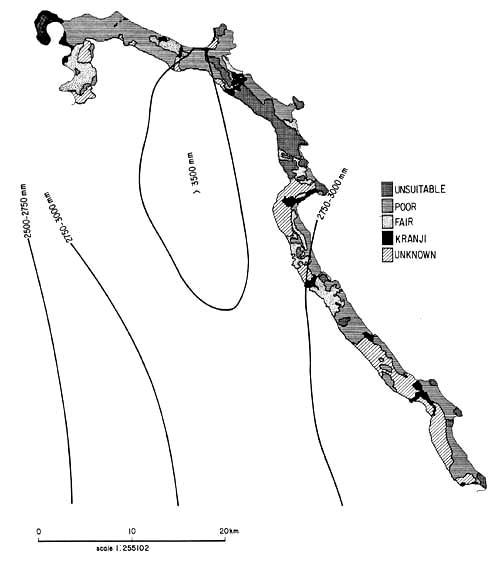
Fig. 5 Soil suitability ratings with respect to acidity in relation to total annual rainfall. Kranji, a potentially acid soil, is identified individually (c) northeast coast

Fig. 6 Shrimp farm sites selected in previous investigations in relation to soil ratings developed for shrimp farming for the present study (a) west coast

Fig. 6 Shrimp farm sites selected in previous investigations in relation to soil ratings developed for shrimp farming for the present study (b) south and southeast coast

Fig. 7a Mean, maximum and minimum concentrations of ammonia nitrogen at various water quality stations. Station names and sample sizes are in Table 2
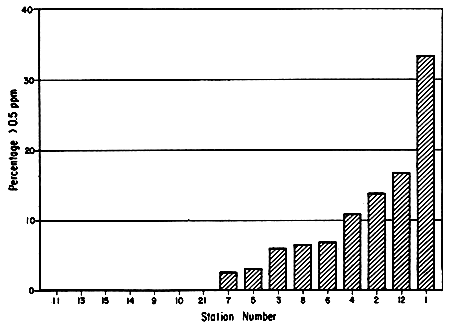
Fig. 7b The percentage of observations of ammonia nitrogen at various water quality stations exceeding “slightly polluted” (0.5 ppm) levels
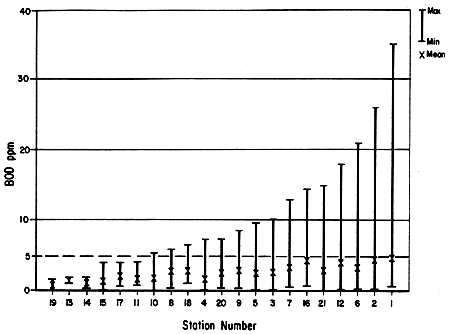
Fig. 8a Mean, maximum and minimum BOD concentrations at various water quality stations. Station names and sample sizes are in Table 2
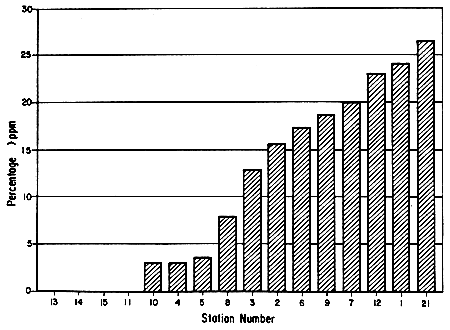
Fig. 8b The percentage of BOD observations at various water quality stations exceeding “moderately polluted” (5–10 ppm) levels. “Grossly polluted” levels exceed 10 ppm
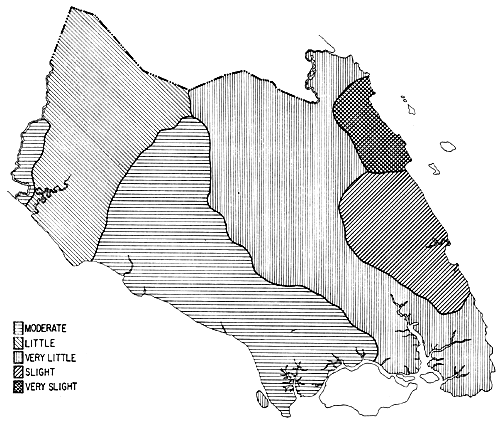
Fig. 9 Prediction of land use impacts on water quality for aquaculture in Johor
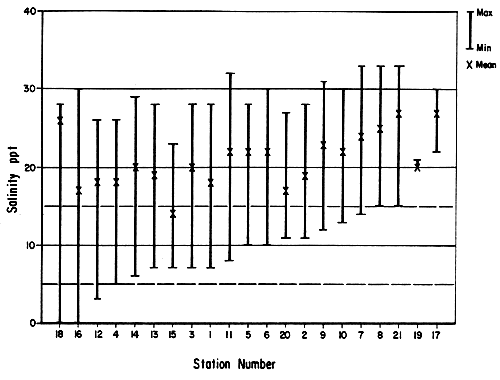
Fig. 10a Mean, maximum and minimum salinities at various water quality stations. Station names and sample sizes are in Table 2
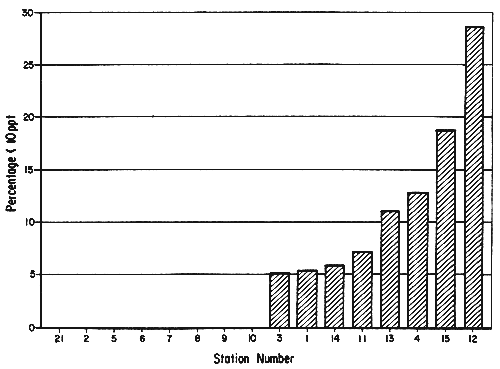
Fig. 10b The percentage of salinity observations at various water quality stations ranging into the “poor” suitability (<10 ppt) category
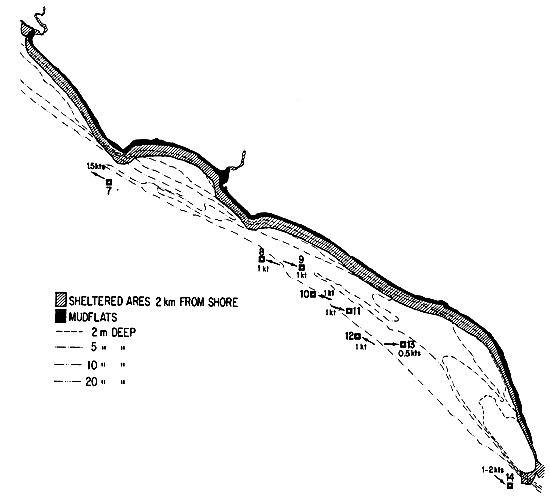
Fig. 11 Bathymetry, shelter and current velocities (a) west coast
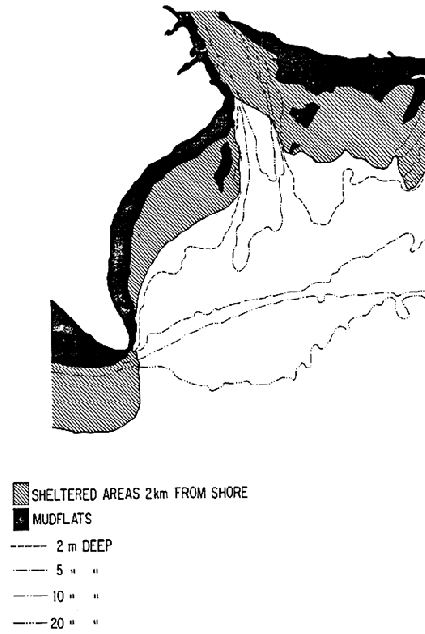
Fig. 11 Bathymetry, shelter and current velocities (b) southwest coast

Fig. 11 Bathymetry, shelter and current velocities (c) west Straits of Johor
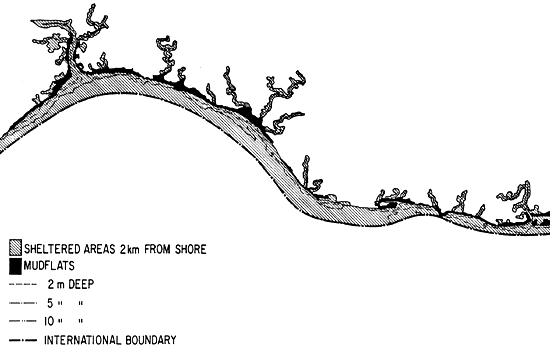
Fig. 11 Bathymetry, shelter and current velocities (d) east Straits of Johor
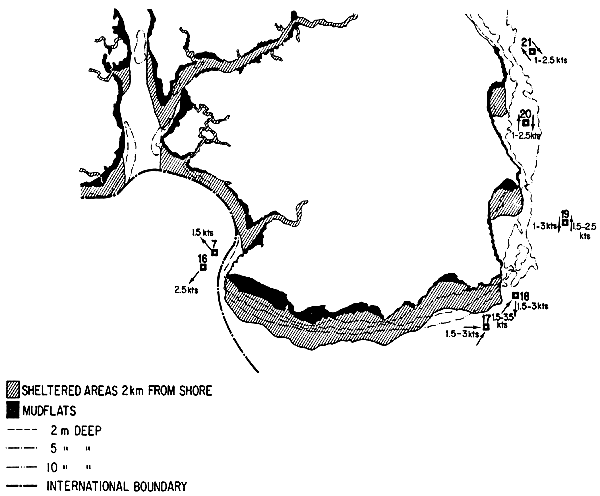
Fig. 11 Bathymetry, shelter and current velocities (e) Sg. Johor and southeast coast